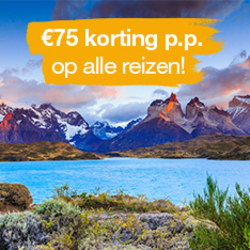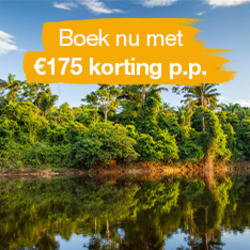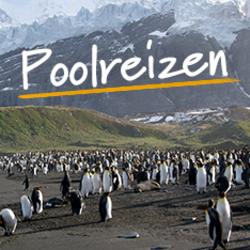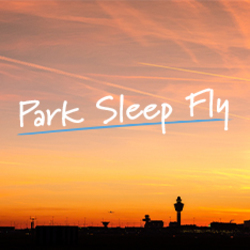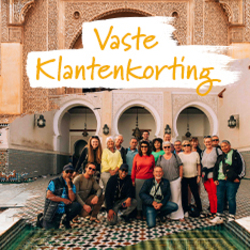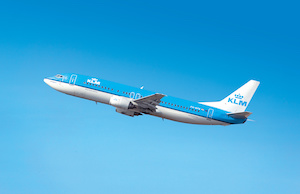-
1
Start Kathmandu.
The tour starts at our hotel in Kathmandu this afternoon. On arrival at the hotel you will need to give your leader 2 passport size photographs for your trek and climbing permits.
-
2
Free in Kathmandu for sightseeing and pre trek briefing and gear checks.
There will be a full trek briefing this morning. In case you need to hire or buy equipment locally there will be time to do this today. The rest of the day is free for sightseeing in Kathmandu. The iconic sights in and around Kathmandu are the monkey temple at Swayambhunath, one of the largest Buddhist Stupas in the world at Bodnath, and the most important Hindu temple in the valley at Pashupatinath. Sightseeing tours can be booked locally.
-
3
Short but spectacular mountain flight to Lukla; trek to Piuyan.
We take the spectacular flight to the small airstrip at Lukla, (2,800m) the gateway to the Khumbu region and the start point for the popular trail towards Everest. It is a busy little village with many lodges, equipment and supply shops as well as the airport. We start our trek heading south from Lukla with a steep descent to Surkye. From here we have a steep climb up to the Chutok La from where we contour into a side valley to Piuyan (2,800m).
-
4
Leave the main trail and climb through lush farmland to Pangkongma.
This morning we leave the main trade route which goes south to Phaphlu. Instead we climb, steeply at first, eastwards on a quieter trail which winds steadily upwards, over the Khari La (3,048m) and through lush terraced farmland towards the small trading centre of Pangkongma (2,900m). Looking back we get good views of Numbur and Karyolung mountains.
-
5
Cross the Pangkongma La. Descend to the Hinku Khola and ascend the valley to Nashing Dingma.
We climb steeply through a lush forest of bamboo and rhododendron with views looking back to Numbur and Kongde peaks, to the Pangkongma La (3,170m). From the top we can see Naulekh and five minutes below the pass we catch our first views of Mera's impressive South Face. It’s a long, steep descent to the bottom of the valley, with views south over the hills of the lower Himalaya. We have lunch in a small lodge just above the river and after lunch we cross the Hinku River using a suspension bridge, and have a 2 hour climb up the east side of the valley to Nashing Dingma (2,963m).
-
6
A steep climb to the Surkye La and then descend to Chholem.
We continue the roller coaster of ups and downs which characterise this first part of the trek. The trail becomes steeper as we climb to the Surkie La (3,060m), a pass that gives us a taste of the altitude yet to come. We'll need a cup of tea to catch our breath in one of the teahouse just over the pass, before continuing our climb up to the summer grazing land of Chholem Kharka (3,600m). We should arrive for a late lunch and in the afternoon the energetic can walk up onto the ridges surrounding Chholem.
-
7
Climb to Panch Pokhari Lakes and descend to Khola Kharka.
This morning we leave the treeline behind, and approach wilder country, where the Sherpa's only herd their animals in the summer months. It’s a shortish but quite hard day today with steep climbs and several ridges to cross. We ascend on stone steps all the way to the first col at 4,300m and then further up to a second col at 4,470m. On a clear day we get a stunning view of Kanchenjunga and its pointed neighbour Jannu far away to the east in India. From the second col we descend to the beautiful holy lakes at Panch Pokhari. Khola Kharka is a short way past the lakes.
-
8
Follow the Hinku Valley to Kote.
There are no lodges en route today so we have a long morning and late lunch so take some snacks and plenty of water. From Khola Kharka we have a short steep climb up stone steps for 30minutes to some prayer flags. Just around the corner we get great views across to Numbur, Pike Peak and the Lamjura Pass. The route contours round the hillside and then descends very steeply all the way down to the Mojang Khola. We cross the river and descend even further to the Hinku Khola. An undulating trail brings us to a bridge across the roaring Hinku Khola and into Kote village. We have a late lunch at the lodge and there is time in the afternoon to wash or explore the village.
-
9
Follow the rocky valley up to Tangnag.
A wonderful walk today following the Hinku Kola. The trail follows the river on a rocky trail upstream crossing several landslide areas. Just after leaving Kote we can see the three peaks of Mera. As we ascend the valley Kyashar peak appears ahead followed by Kusum Kanguru and East Peak. We stop for a cup of tea at Saure and reach Tangnag for a late lunch. We stay in Tangnag, for the next two nights (4,300m). We are now in a deep valley created by the towering walls of Kyashar Peak, Kusum Kanguru and East Peak.
-
10
Acclimatisation at Tangnag.
We spend the day acclimatising to the altitude. There will be a walk this morning to the top of a ridge south of Tangnag. We walk to approximately 5,000m and should have great views of Kusum Kanguru, Kyeshar and East peaks and the Mera La. We return to camp for lunch and rest in the afternoon.
-
11
Half day walk to the last lodges at Khare, our base camp.
A short day with approximately three to four hours of ascent past Dig Kharka to Khare, the Mera Peak Base Camp at 4,900m. The trail climbs steeply out of Tangnag to some prayer flags overlooking the glacier tumbling down from Kyeshar peak. The trail gets easier as we climb up the valley past Dig Kharka and then there is a last steeper climb to the lodges at Khare. We have lunch in Khare and a free afternoon. From Khare we get great views of Mera, Charpati Himal, Kyeshar Peak and other Himalayan giants.
-
12
Acclimatisation at Khare. Gear check and practice with ice axes and crampons and walking roped up.
We have an acclimatisation day at Khare and there will be the chance to walk up on to the glacier towards the Mera La, where we will practice our ice axe, crampon and rope technique and use of jumar. Please note that equipment checks and all practice sessions are compulsory before the climb.
-
13
A short but hard day ascending steeply in snow to the Mera La.
A short but steep and hard walk up to the Mera La. The trail climbs steeply out of Khare on a rocky trail with great views looking ahead to the peaks of Mera and back down to Khare. Continuing up the trail gets steeper and there may well be snow and we will need crampons and helmets as we climb the very steep rocky gully onto the glacier. Once on the glacier the gradient eases off and we follow the glacier up to the Mera La where we stay tonight. Camp is just below the pass on the Honku side, a very cold and windy spot but the sunset from this campsite is truly spectacular with the peaks of the Honku Himal glowing red in the setting sun.
-
14
Trek up to High Camp at 5800m. Preparation for tomorrow's climb.
Another very short day as we ascend the Mera glacier up to a rocky outcrop to establish High Camp at 5,800m. The trail is not so steep and we can see our route for tomorrow. From camp it is possible to see five out of the six highest mountains on earth, stretching from Kanchenjunga in the east through Makalu, Lhotse and Everest to Cho Oyu in the west. This afternoon there will be a final gear check and we will prepare our clothes ready for tomorrow. After sunset (look out for the last orange glow on the summit of Makalu) we retire to the warmth of our sleeping bags to rest before the summit attempt tomorrow. Please note camping space is extremely limited at high camp.
-
15
Climb Mera Central Peak (6461m).
An extremely long day with a very early (and usually a very cold) start at around 2am or earlier. We will set off roped up in teams. You will need to carry your ice axe and wear crampons as we ascend the wide, open glacier, avoiding the few crevasses. The terrain here is not very steep but the going is very slow due to the altitude and it can be very cold and windy. As dawn approaches the trail starts to ascend steeply to the east of the left-hand ridge before swinging right on easier ground to approach the summit. As we approach the summit we will rest at a col whilst the Sherpa's fix a safety rope to the bottom of the last part of the summit climb. The last 50m to the summit is the steepest part of the climb. We will need the jumar for this last section - it is steep and makes the climb more challenging. Please note crevasses here change from year to year. Once at the top the views from the sun rising over Kanchenjunga in the east, past Makalu to the plumed Everest Himal in the centre and Cho Oyu further west, make every step well worthwhile. Descending this steep section will involve abseiling from the summit and we will use the fixed rope back to the col. From here the descent is usually quicker although we will still be roped up. We descend back down to our base camp at Khare, usually arriving very late afternoon. After a long but rewarding day, returning to a lower altitude (4,900m) means that we should all sleep soundly.
-
16
An easier walk as we retrace our steps through Tangnag to Kote.
A long but beautiful walk as we retrace our steps down the valley past Tangnag, where we have lunch and further down the valley to Kote.
-
17
A steep climb out of the valley towards the Zatrwa La to Chetrabu.
A hard day today as we begin our ascent of the Zatrwa La, the pass that brings us back to Lula. Leaving Kote a small rocky trail takes us down the Hinku Valley for a couple of hours. There are some very steep rocky steps both up and down. We finally leave the Hinku Kola and begin a very steep climb through the forest. We have an early lunch at Toktar, a small cluster of tea houses in the forest. Through the trees we can just spot the summit of Mera Peak now far away. After lunch we continue climbing up through forest. The rhododendron trees give way to smaller bushes and the mountains begin to appear across the valley. Looking back on a clear day we can see all three summits of Mera, Peak 41 and Naulekh. The higher we climb the better the views and we can trace much of the route we have trekked the past couple of weeks. Finally we reach a few prayer flags and from here the trail eases as we approach the lodge at Chetrabu. We enjoy views of Mera's vertical west face.
-
18
Return to Lukla over the Zatrwa La.
A long day today as we return to Lukla. We need to carry crampons or microspikes today for the descent of the pass. From the lodge it’s a steep climb to the top of the first (and highest) part of the Zatrwa La at 4,640m. There is a small tea shop near the summit. From the top we get fantastic views of many of the peaks of Khumbu. There is a short steep descent which can be icy and then the trail contours precariously round the hillside for an hour or so to the second Zatrwa La at 4,540m. From here we have a very steep descent to Kharka Tseng. This section of the trail can be snow or ice covered and we may need crampons for this section. After a snack lunch we continue our descent on a rocky trail to Chutenga, then it's a further couple of hours or so back to Lukla. Walk Profile: approx. 12.4km / 8.5hrs walking
-
19
Fly to Kathmandu.
We fly to Kathmandu in the morning, transfer to our hotel and head straight for a hot shower or a beer, depending on priorities!
-
20
Free in Kathmandu for individual sightseeing.
A free day in Kathmandu for sightseeing or shopping.
-
21
End Kathmandu.
The trip ends after breakfast. Those travelling on the group flight will be transferred to the airport after breakfast.
Dé specialist in rondreizen sinds 1983
Internationale groepsreis Mera Peak Climb
Binnenkort boekbaar.
Ik blijf graag op de hoogte.

Bedankt, we houden je op de hoogte
Liever telefonisch contact met één van onze reisadviseurs? Neem contact met mij op.

Internationale groepsreis Mera Peak Climb
Chance to summit Mera Peak, the highest trekking peak in Nepal
< Terug
naar resultaten





